Silhouette photography has a dramatic and mysterious atmosphere. You might have wondered, how other photographers take breathtaking silhouette photos.
In this article, I’ll let you in on the secret tips to creating spectacular silhouette photography. Once you understand the basic techniques, challenging lighting conditions become photographic opportunities.
A silhouette is created by a subject photographed against a bright background. The hard backlighting makes the subject dark, concealing the details. The subject may be a person or an object, but we only see its shape.
Usually, we want to balance the exposure during photography. We want to reach an evenly lit scene in our photographs.
But in silhouette pictures, we want a bright background to be properly exposed, while the subject goes dark and loses all or most of its details. (mention dynamic range here)
Silhouettes photography benefits from the cases when the background is much brighter than the subject. It takes advantage of what might otherwise be a challenging lighting condition.
Such photos take a more minimalistic approach, compared to the usual detailed images. They reduce the visible information, concentrating solely on outlines, contrast, patterns, and shapes.
Shooting silhouette photography is easy once you know the basics. It’s mostly about where you stand in reference to a light source.
You’ll need a subject with a strong and identifiable shape. This subject will create your silhouette once you take the picture.
You also need a strong light source that is behind your subject, which creates a hard light. The sun as your light source is the easiest way to create silhouette photography.
To reach the desired results, make sure you are mindful of your position and camera settings when taking the photo. We will explain everything later in this article.
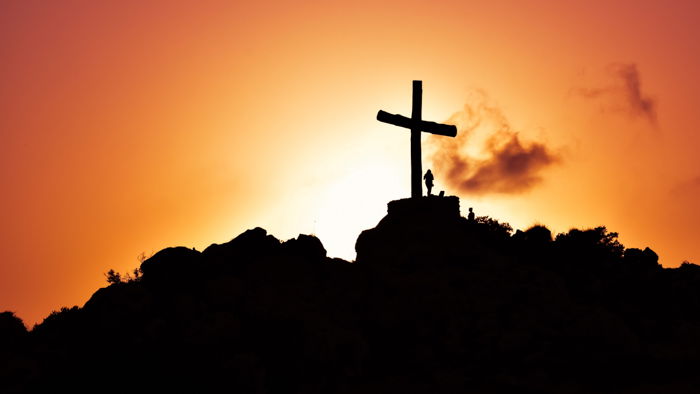
Cameras read light in the scene and try to figure out how to reach the best exposure. But the camera is only a machine, so it cannot always figure out the right values. This is where light metering comes in.
It gives you a chance to tell the camera how you want it to evaluate the scene. There are three main modes, which different camera brands use different terminology for.
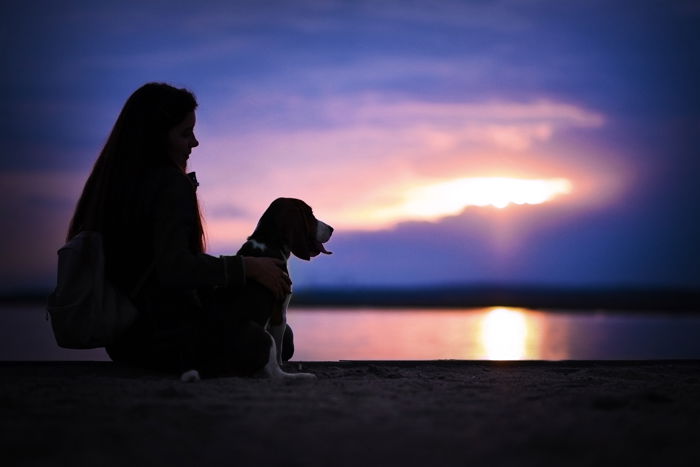
In a silhouette photo, I want certain parts of my image to be well-exposed and other parts to be under-exposed. If my camera exposes for the whole scene, it will try to even out exposure differences.
In spot metering mode, I’m telling my camera precisely what part of the scene I want well-exposed. In the case of silhouettes, I want the background to be well-exposed, making my subject dark.
Therefore, spot metering is the best for making silhouettes.
Choose a relatively narrow aperture (around f/11). Press the shutter button halfway down, focusing on the background. You might have to move your camera a bit with the shutter button still halfway pressed to recompose the picture. This way, you can place your subject where you want it in the frame.
At f/11, the entire scene will be sharp. Most of the details in the subject are lost in the silhouette, so focus doesn’t matter too much. It’s just the edges of your subject that need to be in focus.
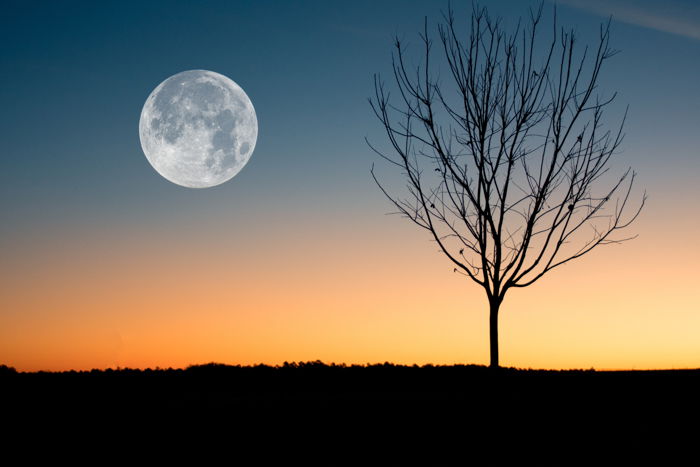
If your subject isn’t dark enough, adjust your exposure compensation dial to -0.3 or -0.7 to darken the entire image a bit.
Finally, don’t use flash when creating silhouettes. Flash is all about bringing out the detail of your subject. For a silhouette, we want the subject to be under-exposed.
Because the light is behind the subject, the lighting method you need is called backlighting. When choosing the light conditions for a silhouette photo, you need to pick a light source that provides hard light.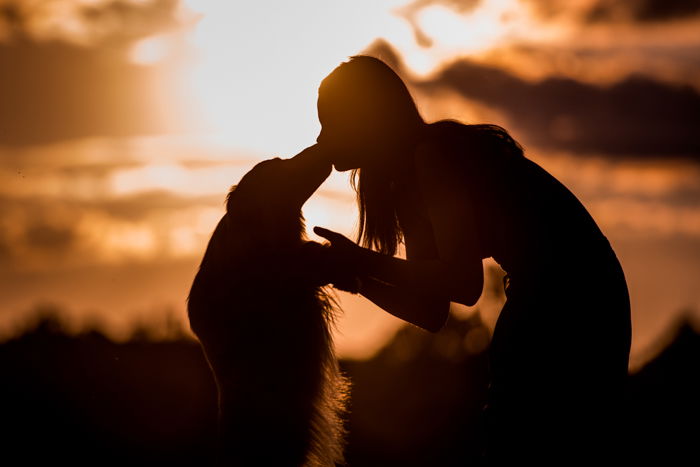
The sun works perfectly for this purpose, but you have to make sure it is behind the subject. This makes sunset and sunrise prime times for silhouette photography.
To determine whether the light and the will be sufficient, use an application to check out the forecast. The Photographer’s Ephemeris app and website are made for specifically this purpose. They give you information about how the light will look at your chosen location, at any time of the day.
You can also use artificial light to capture silhouettes. Street light or a car’s headlights behind your subject can make for some pretty amazing results. If you are bringing your own lighting equipment, you even have the chance to reposition the light according to how you want to create a silhouette.
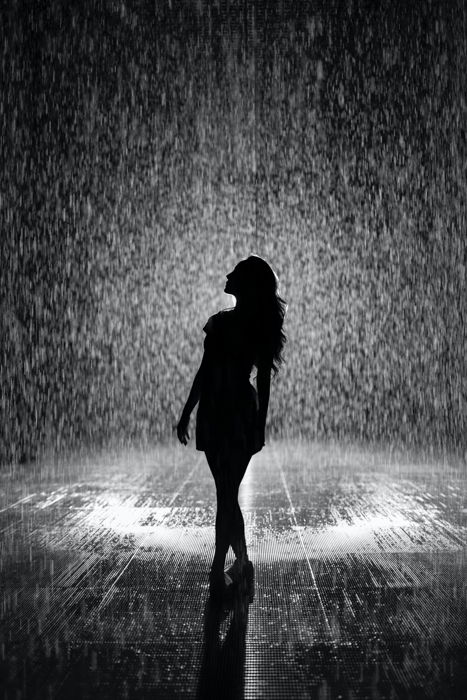
Silhouette pictures focus on the form of the subject. Color and details of the subject will be dark, so the form must be strong and have a clear outline.
Silhouette photos of people are particular favourites because the human shape is easily recognisable.
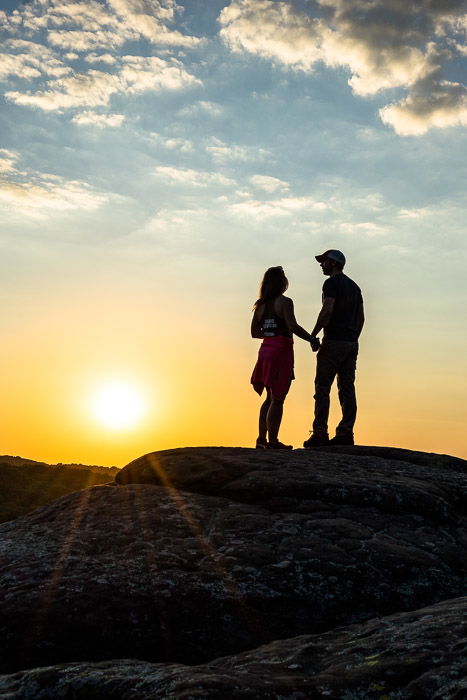
I captured this couple watching a sunset at the Garden of the Gods in the Shawnee National Forest. The sun behind them creates a silhouette. My camera settings were 1/200th of a second at f/11, ISO 100.
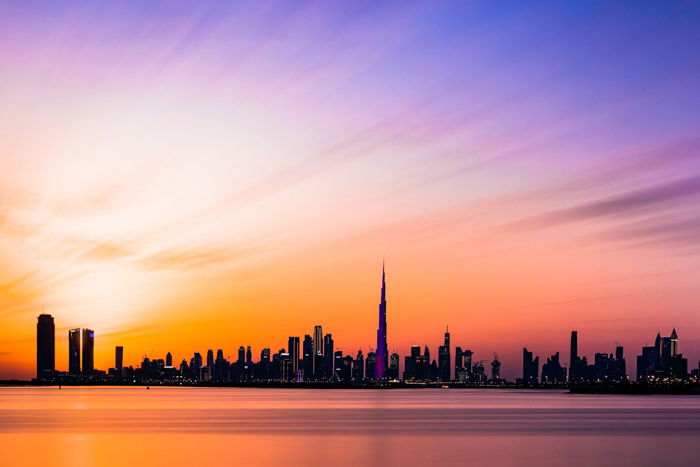
The buildings in the city’s skyline merge together and lose their distinctive shapes.
If you have a distinct subject and a strong light source, but you’re not getting a silhouette, change your position. The trick is in the relationship between elements.
Stand in front of your subject, so that it is placed between you a strong light source.

Position the subject directly between your camera and the light source.
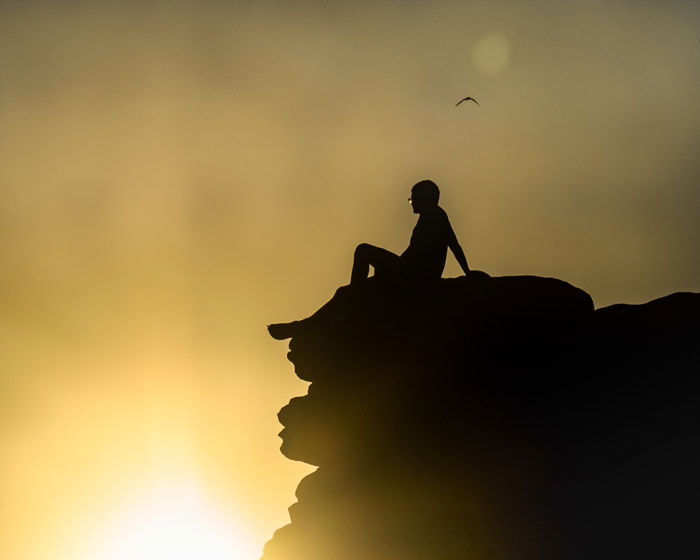
A boy watches the sunset at Garden of the Gods in Shawnee National Forest. My camera settings were 1/320th of a second at f/32, ISO 100.
Creating stunning silhouette photography is all about where you stand in relation to your subject and the light. Place your subject between you and the light source. Use Spot metering mode and a small aperture.
Look for an uncluttered background. It’s all about the shape of the silhouette, keep everything else simple.
Now that you’re equipped with all the info you need, go and take some silhouette photos of your own!
If you enjoyed this article, make sure to check out our Intuitive Composition eBook!